
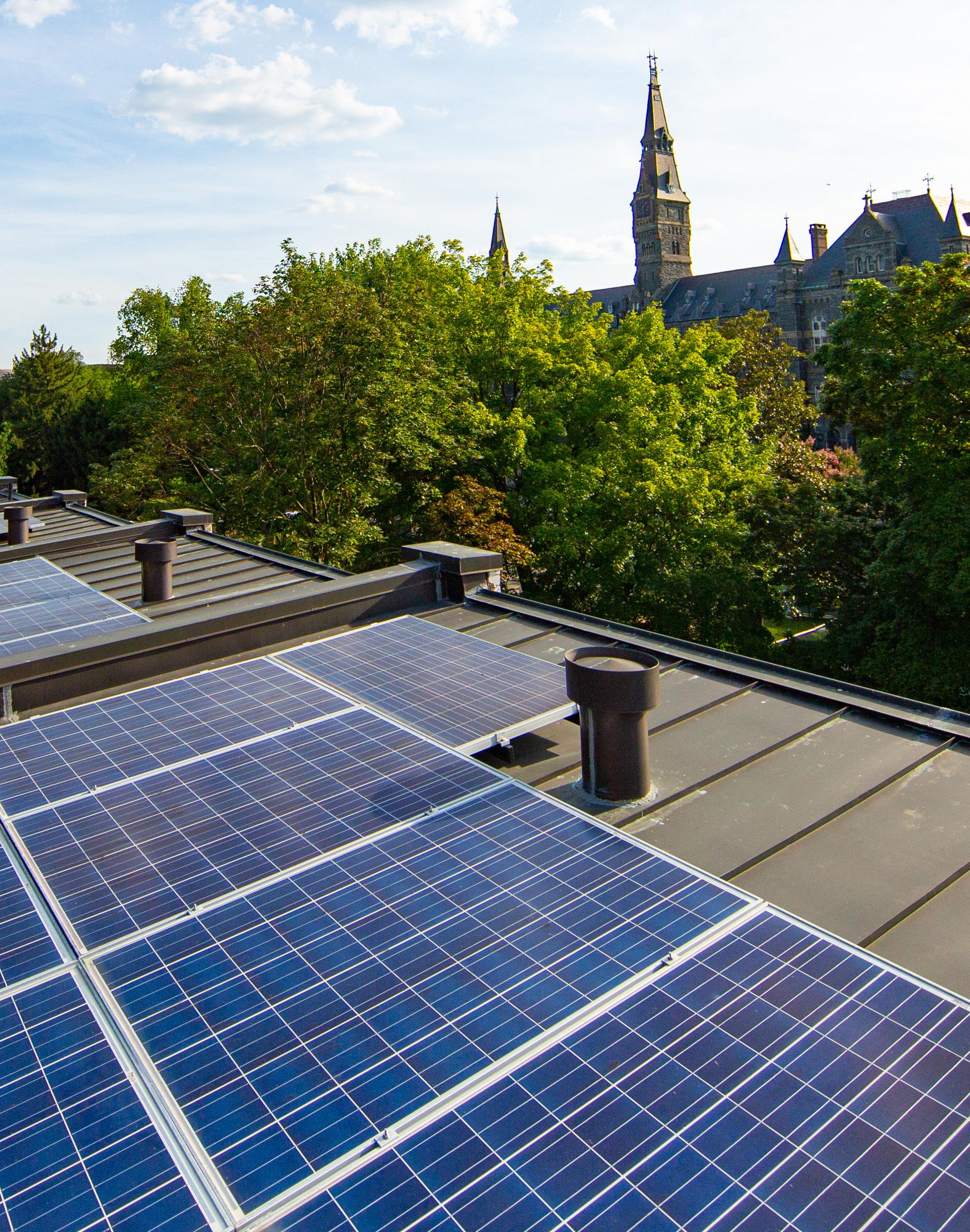



Michelle Kolacz (ESM’25), on behalf of the Business of Sustainability Initiative
The author acknowledges the contributions of the following Master of Science in Environment and Sustainability Management (MS-ESM) students. Class of 2025 contributors include: Gabriela Pajuelo Chavez, Hallie Cordingley, Nari Nyamsuren, Yiming Song, Maddie Stoddard, Livia Sun, and Felipe Villa, who provided the written documentation of the workshop sessions, which informed the insights presented here. Further, the authors thank Professors Vishal Agrawal and Şafak Yücel for their valuable guidance and editorial feedback.

Despite solar and wind energy experiencing the fastest growth at 16% in 2024, fossil fuels still dominate global energy consumption at over 80% and continue to expand.
The clean energy transition represents enormous environmental, societal, and economic potential, as well as complex and nuanced challenges. While solar and wind energy expanded by 16% and were the sources that grew the fastest in 2024, fossil fuels still account for over 80% of the world’s energy and also continue to grow (Energy Institute et al., 2025; International Energy Agency, 2024). Achieving climate goals and expanding energy access to meet increasing global demands in the age of artificial intelligence (AI) requires unparalleled investment, innovation, and institutional coordination. Moving from fossil fuels to renewable energy is more than a technological shift, but rather a restructuring and redesigning of energy production, distribution, and consumption in a way that integrates human development and smart policy (UNDP Climate Promise, 2025).
To facilitate candid conversations and identify actionable insights and strategic priorities from multi-stakeholder perspectives, Georgetown University’s McDonough School of Business convened a workshop in October 2024. This event created a shared space for leaders from across the industry to explore encountered barriers and solutions across four dimensions that are central to the energy transition (see Appendix A for the agenda of the workshop).
The workshop followed the previous success of the Business of Sustainability Initiative’s 2023 Workshop, which was hosted in collaboration with the National Institute of Standards and Technology (NIST). The focus of that iteration was voluntary carbon markets. Lessons and insights from that convening informed the design of the 2024 version, but with a shift in focus to another topic critical to decarbonization and growth, transforming the global energy system to address security, equitable access, and longterm economic resilience. (See the resulting paper from the 2024 workshop, Challenges and Opportunities for the Voluntary Carbon Markets.)
Insights presented in this white paper reflect a cross-sector glimpse of constraints hindering progress and the high-impact opportunities needed to transform the energy network of the U.S. to its full potential. Rather than a single solution, this paper offers a set of strategic lenses for investors, regulators, and developers to act with great intention and efficiency to speed up the inclusive and global transition.
The findings in this report were produced following a workshop in fall 2024 and are not direct proposals or policy recommendations from the Business of Sustainability Initiative at Georgetown University’s McDonough School of Business.

Transitioning to a clean energy economy presents an opportunity to meet growing global energy demands while simultaneously decarbonizing and meeting climate goals. However, shifting from a fossil fuel-reliant economy to one based on renewable energy sources entails a range of multifaceted challenges that require strategic navigation and a deliberate approach.
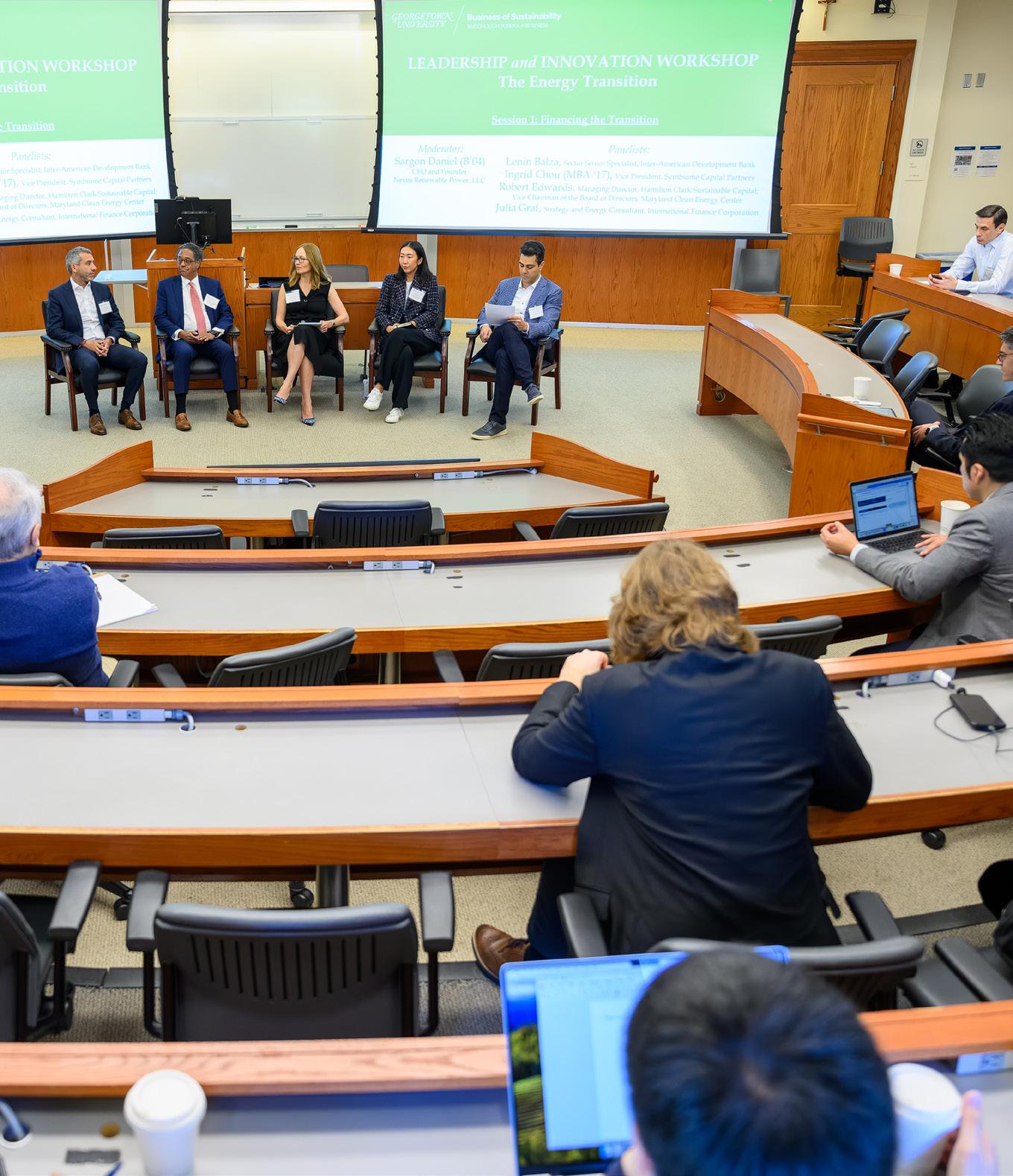
To address the dynamic landscape of the energy transition, on October 31, 2024, the Business of Sustainability Initiative at Georgetown University’s McDonough School of Business hosted a Leadership and Innovation Workshop convening various parties to explore issues and alignment.
Panels from the workshop focused on four key areas of discussion: Financing the Transition, Driving the Demand, Facilitating the Transition through Policy, and Transition for All, as outlined and described in the agenda (Appendix A). A diverse array of entities was present and included stakeholders such as project developers, financers, policymakers, and NGOs, who were brought together to represent insight from key players in this effort.
Insight gathered from the discussions resulted in the identification of various challenges and opportunities, many of which have elements that converge and connect across the categories. However, despite the recurrent and interconnected nature of some challenges and opportunities, distinct themes are outlined in each of the four categories to allow for a more focused examination that supports the development of targeted strategies. Thus, the purpose of this report is not only to articulate the landscape from various perspectives clearly, but also to provide a foundation for informing and driving effective interventions and improvements for the whole system.
This report provides an overview of the discussion among practitioners and policymakers during the workshop. As per the Chatham House Rule, we do not attribute a comment to a specific participant; instead, we discuss the general nature of the points raised by participants.


Developers face challenges, including high interest rates, high upfront costs, long-term payback periods, and fragmented and changing regulations that slow progress.
As one of the most capital-intensive sectors in the world, financing renewable energy poses significant barriers, particularly in the development of large-scale projects. Developers face challenges, including high interest rates, high upfront costs, long-term payback periods, and fragmented and changing regulations that slow progress. Investor interest is strong but tempered with caution due to risk and opportunity costs. As the industry evolves, the private sector and governments will play a pivotal role in financing clean energy at scale and promoting policies that stimulate the economy. Further, twothirds of the global population accounts for only one-fifth of the clean energy investment, which is in developing and emerging economies (International Energy Agency, 2021). To accelerate renewable energy deployment across geographies, particularly in regions such as Latin America, tailored financing mechanisms and flexible regulatory frameworks will be crucial.
Significant upfront investment and long-term financing are required for many renewable energy projects, particularly utility-scale. However, rising interest rates are increasing borrowing costs, affecting projects and technologies with long-term payback periods. Further, lenders tend to prefer short-term financing over longer-term agreements, creating a challenging environment for attracting long-term “sticky” and affordable financing. There is also a dearth of capital providers who understand the timelines and risks of renewable energy projects, resulting in capital structures that have a mismatch between traditional requirements and innovative or distributed solutions that may not fit the standard project structure.
Investors remain cautious due to several factors, including long timelines for development, uncertainty about revenue models, and instability in the regulatory environment. Perceived risks of these projects affect investment, despite a growing interest in sustainability. Liquidity and predictability are often sought by investors, creating a mismatch of the projects and their characteristics during a transition period. Regulatory uncertainty, in particular, including delays in permitting guidance and changes in incentives, further exacerbates perceived and actual risk.
Even if funding is obtained for a particular project, project development may have to contend with physical vulnerabilities that can impact deployment. These uncertainties can include lead times for components and bottlenecks in construction, both of which can increase costs and extend timelines. Material and labor costs are also rising due to inflation and supply chain disruption, which affects returns. There is also the matter of an aging grid in the United States, which can create transmission and distribution constraints. These infrastructure considerations raise risks for project completion and delivery, reducing the appeal of funding these projects, particularly in areas that have less development in place.
The energy transition is in a different stage of development across geographies beyond the U.S. Certain regions, such as Latin America, are further behind due to underdeveloped markets and processes, as well as sovereign risk. Institutional frameworks can also be misaligned with the needs for the clean energy transition. Further supply chain limitations can derive from both logistical and geopolitical reasons, which create an uneven playing field. Without financial mechanisms that are targeted to improve capital access in specific regions, a number of emerging economies are at risk, even if they have promise.

To expand access to capital, bespoke or tailored financial mechanisms may offer a way to reduce risk for investors. Clean energy deployment is increasingly being supported by various instruments such as tax equity, syndicated loans, and blended finance platforms. Programs like the Inflation Reduction Act have also provided critical tax incentives that reduce costs, while encouraging job creation and stimulating the economy. However, a deeper exploration of ways to mobilize private capital, particularly in markets that are underfunded, remains an area to be explored.
While policy models can help inform regions where to begin, regulatory frameworks should be adapted to local realities. Additionally, flexibility and adaptability in implementation timelines and other compliance can also encourage participation. For example, in Latin America, one example could be creating an alignment in permitting, investment cycles, and procurement frameworks to free stalled projects in the pipeline.
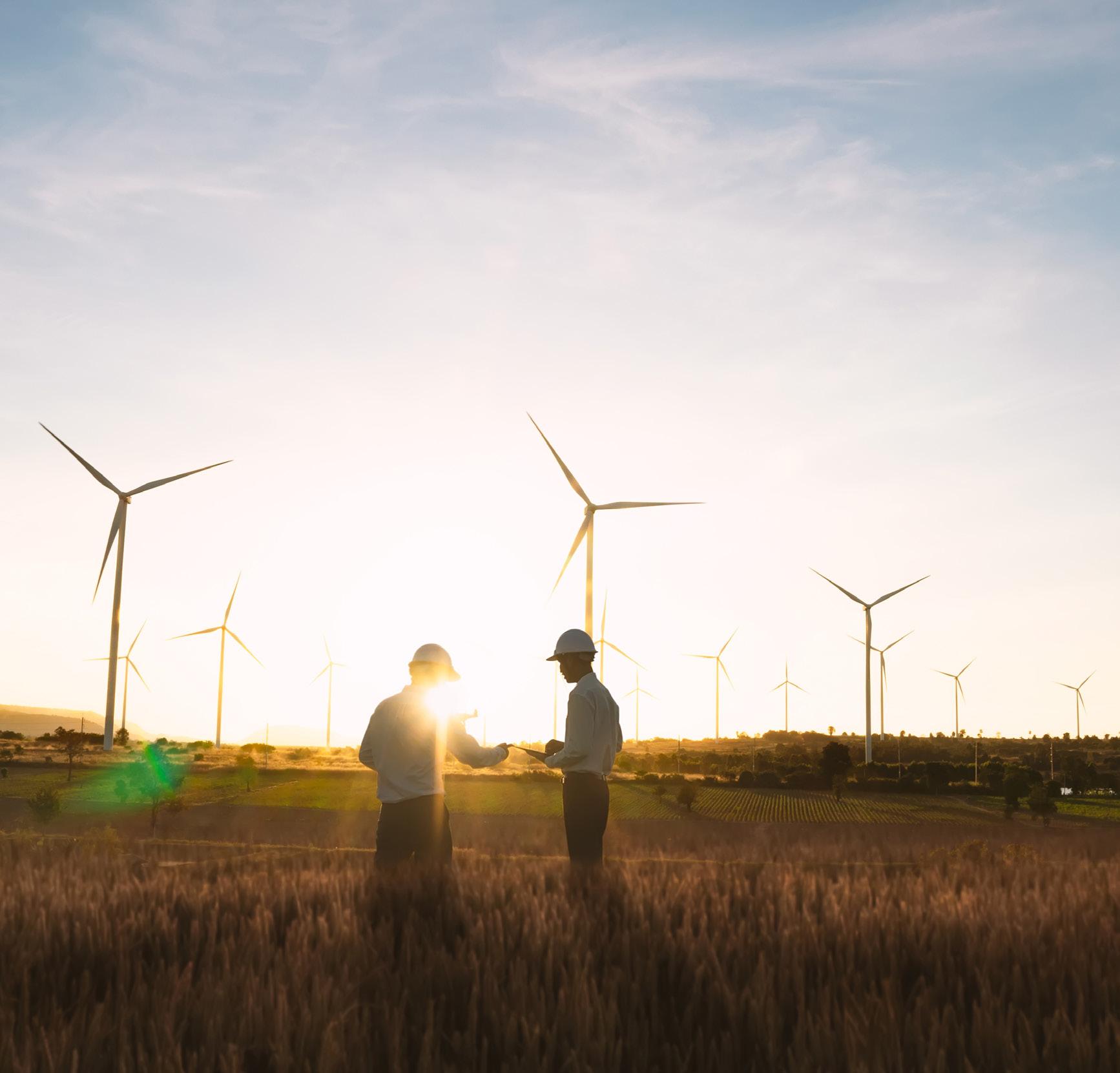

Nuclear and small modular reactors (SMRs) offer the potential for stable baseload power; however, costs, regulations, and public skepticism delay their implementation.
Increasing climate ambitions, electrification, digitalization, and continued economic growth are all rapidly increasing energy demand faster than average (International Energy Agency, 2025a; Spencer & Singh, 2024). This is seen across sectors and in everything from electric vehicles to AI-powered data centers, the latter of which are increasingly center stage in this conversation (International Energy Agency, 2025b). To meet this demand, some companies are seeking clear, reliable, and traceable supplies, often independent from the already strained grids. Simultaneously, investors and regulators are intensifying a focus on resilience and credibility. However, the demand we are seeing is often unmanaged with underprepared infrastructure and policy frameworks. For demand growth to support the clean energy transition, credible frameworks, adequate modernization, and alignment with long-term, holistic goals must be balanced.
Utilities are depended upon to provide affordable and reliable energy, but existing regulations often do not align incentives for grid upgrades, demand-side flexibility, or clean procurement. The design of rate structures can lead to burdened end users, and there is limited exploration of alternative mechanisms. Further, corporate buyers have few options beyond traditional PPAs.
The electricity demand is accelerating, due in part to the rise of data centers as well as the shift towards electrification. Intentional management is critical; without this, growth will strain grid capacity, increase emissions, and affect reliability and affordability. Energy efficiency, conservation, and flexible demand should not be forgotten or underestimated in the planning process and in decision-making.
Aging grid infrastructure is not keeping up with growing distributed generation or fixed-load needs. For instance, data centers require constant power, which renewables alone cannot currently provide due to their intermittent nature. Nuclear and small modular reactors (SMRs) offer the potential for stable baseload power; however, costs, regulations, and public skepticism delay their implementation.
There is currently a narrow focus on direct energy emissions within carbon accounting frameworks. These can include overlooking infrastructure, systemic impacts, and transmission losses instead of focusing on credible clean energy procurement.

Across the globe, particularly in Africa and Southeast Asia, and other under-electrified regions, we are seeing emerging demand centers that are offering high-impact opportunities for renewables in meeting new loads. These markets do not have to wrestle with aging infrastructure and can jump into clean energy systems, given the correct investment models.
The procurement of clean energy increasingly supports risk mitigation and avoids destabilization effects. Storage systems, microgrids, and onsite renewables allow a reduction of exposure to climate-related disruptions as well as grid volatility. Some insurance providers are even rewarding specific strategies with lower premiums or improved terms. This reliability also affects the broader market, as blackouts can cause dips in GDP (Bakke, 2017).
Increasingly, clean energy is becoming linked to brand value, investor confidence, and supply chain influence. Companies can differentiate themselves or improve brand image by transparently committing to high-impact energy procurement and catalyzing broader shifts in the market. Further, procurement decisions and working with suppliers can also have ripple effects.
Innovation in energy storage, virtual power plants, and EV-grid integration can be driven through corporate demand. Ancillary services are becoming a focus for emerging markets, in areas such as demand response, storage as a service, and grid stabilization, which provide new potential business models and revenue streams for various parties.
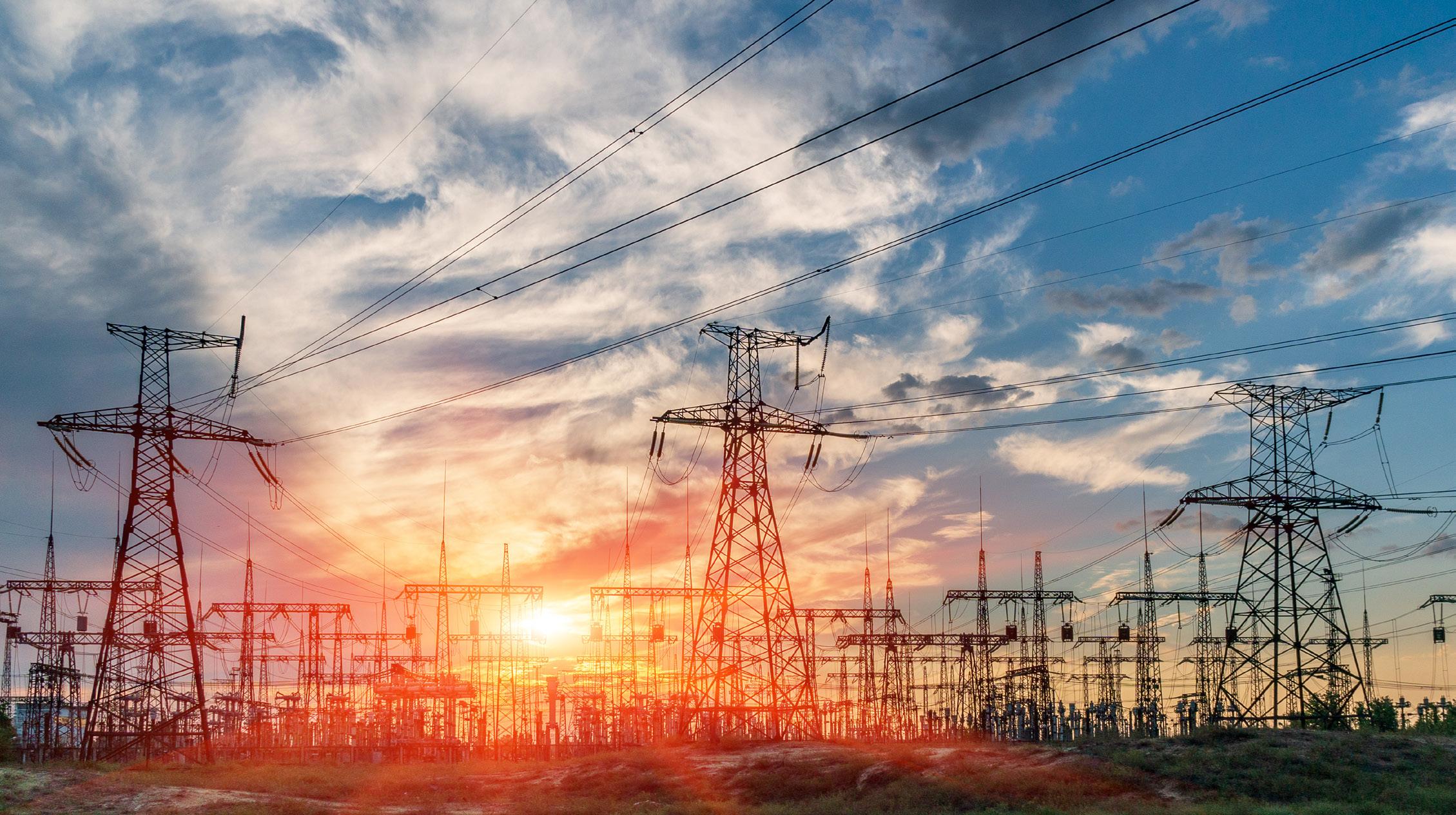

Thoughtful policy is a crucial enabler of the energy transition, as it can shape capital deployment, infrastructure creation, and the speed at which renewable energy reaches the grid (United Nations, n.d.). However, our current policy is fragmented and inconsistent. Even with the IRA, the deployment pace is bogged down by outdated systems that are optimized for fossil-based power. As demand rises and decarbonization goals increase, new policies must consider and prioritize coordination and scalability. Further, with changes in the political landscape also adding uncertainty, stability for policy that invests in a resilient future is also key (World Economic Forum & Accenture, 2025).
Current rules on areas such as permitting and interconnection were often designed with the needs of traditional, centralized generation rather than today’s decentralized energy system. Further state and local regulations may not always be aligned, which can cause confusion and inefficiencies. Developers must navigate a number of rules, some of which can be conflicting; this further increases transaction costs and reduces the certainty of investments.
Deployment can be accelerated by aligning developer incentives with public outcomes. Simplified and durable policy creation and reforms would improve processing efficiency for projects. Areas for potential include changing to a first-ready interconnection model instead of first-come, addressing queue-sitting, and implementing cluster studies.
Permitting can be drawn out and inconsistent, causing some projects to face year-long delays before they can begin construction. Additionally, interconnection queues are being overwhelmed, leaving nearly 95% of the renewable capacity waiting, at least some of the time, for access to the grid. Backlogs are also an issue, with many grid operators lacking both tools and resources to clear them.
For thoughtful policy that is set up for project acceptance and long-term success, appropriate community engagement is essential. Making sure that early and transparent engagement occurs can not only reduce delays but also increase shared ownership. Stakeholder participation, whether with local governments, tribal nations, or civil society, can align local priorities and national goals.

For the energy transition to be successful, it must be equitable. Without targeted policies, the benefits of clean energy may flow to asset-owning populations or advanced economies instead of those who could benefit the most, particularly those living in developing economies or energy poverty (Meddeb et al., 2024). Integrating inclusivity into energy planning is not only ethical but also strategic, as it builds community trust, local resilience, energy self-sufficiency and security, and widespread participation in decarbonization goals (Meddeb et al., 2024).
Energy poverty is experienced by roughly one in seven U.S. households, which forgo food or other necessities in order to pay utility bills. There are some programs in existence that provide vital support for these households. However, they are often underfunded and reactive rather than proactive. Not only is energy poverty an ethical concern, but it can hinder economic development, create instability and even unrest, all of which could harm the greater market.
Incentives that are split between landlords and tenants can complicate electrification and even energy efficiency upgrades in rental properties. Further, weatherization programs can exclude homes that inadvertently target low-income housing, while the incentives benefit those who can afford homes. As a result, this misalignment can leave renters, mobile home residents, and multifamily tenants behind.
Many of the existing assistance programs are siloed, difficult to access, or complex/and timeconsuming to navigate. Rules and eligibility criteria can also differ, increasing the entry barrier.
Ensuring community representation that is not just heard, but also used to inform the process is critical. Often, the communities that are the most affected by energy poverty are underrepresented in the planning processes for renewable energy. Formal roles in project development or policy design can play an essential role in making sure community priorities are not overlooked or sidelined by inefficiencies.

One in seven U.S. households experience energy poverty.

Programs would benefit from being redesigned for accessibility. Compiling energy assistance, efficiency upgrades, and retrofit funding into one location could reduce navigation barriers. Further, strategic pairing should be in place, such as weatherization and housing rehabilitation programs. Savings from solar or even efficiency upgrades should be allowed to be reinvested in the community.
Incentives should be structured in an inclusive way that allows renters and low-income households to participate in electrification and the clean energy transition. Policymakers can consider how different programs could be used to facilitate access, funding, and support to underserved neighborhoods. Household electrification, such as heat pumps, solar panels, and energy-efficient appliances, would help maintain affordability and avoid energy poverty, especially as costs increase.
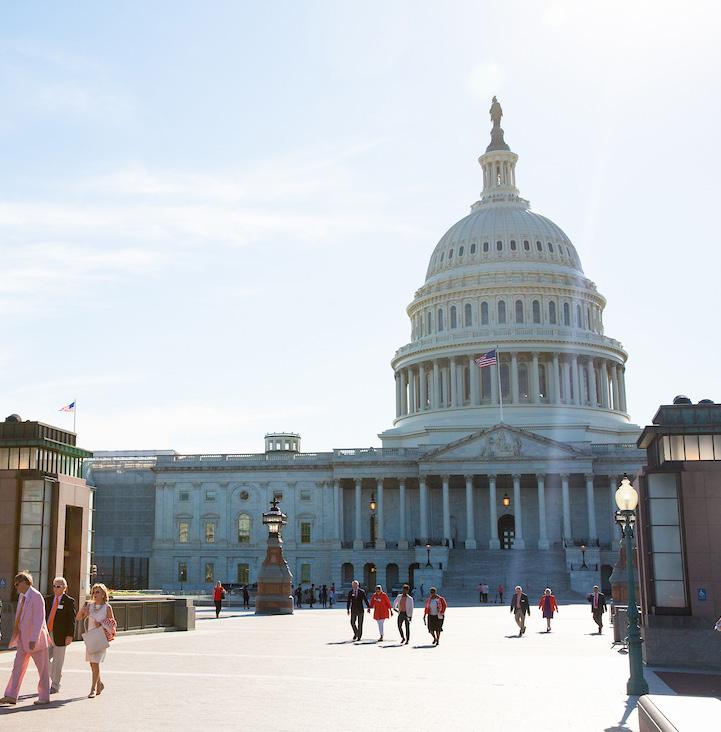

The energy transition is already underway, but the critical questions now are how to overcome roadblocks and accelerate progress efficiently, while bringing along as many as possible. The themes that emerge from this white paper clearly show the interconnected levers that are needed in tandem to enable the full scale of the transformation.
Decision-makers must recognize that to unlock capital, subsidies and tax credits are not sufficient. Trust, incentive and risk alignment, and regulatory confidence are essential for success. Systems must be designed for resilience and equity, not as an afterthought, but in a way that is foundational.
Going forward, targeted investment, audacious policy innovation, and creative collaboration across sectors and stakeholders are essential for success. Mindsets must shift from short-term to meeting the needs of the present while also addressing long-term systems change. This will also require listening to and incorporating feedback from communities around the globe that are most impacted by the transition.
This white paper is grounded in real-world complexity and informed by dialogue from numerous stakeholders who are focusing their energy on powering the world. These insights, if acted upon with both intentionality and urgency, have the ability to help shape an energy future and economy that is cleaner, stronger, more just, and brighter for us all.



Bakke, G. (2017). The Grid: The Fraying Wires between Americans and Our Energy Future. Bloomsbury Publishing. Energy Institute, Kearney, & KPMG. (2025). Statistical Review of World Energy (2025 | 74th edition). https://www.energyinst. org/statistical-review#:~:text=Global%20energy%20supply%20increased%202,86%25%20of%20the%20energy%20mix
International Energy Agency. (2021). Financing Clean Energy Transitions in Emerging and Developing Economies. https://iea. blob.core.windows.net/assets/6756ccd2-0772-4ffd-85e4-b73428ff9c72/FinancingCleanEnergyTransitionsinEMDEs_ WorldEnergyInvestment2021SpecialReport.pdf
International Energy Agency. (2024, August 2). Greenhouse Gas Emissions from Energy Data Explorer. International Energy Agency. https://www.iea.org/data-and-statistics/data-tools/greenhouse-gas-emissions-from-energy-data-explorer
International Energy Agency. (2025a, March). Global Energy Review 2025. https://iea.blob.core.windows.net/ assets/5b169aa1-bc88-4c96-b828-aaa50406ba80/GlobalEnergyReview2025.pdf
International Energy Agency. (2025b, April). Energy and AI. https://iea.blob.core.windows.net/assets/601eaec9-ba91-4623819b-4ded331ec9e8/EnergyandAI.pdf
Meddeb, R., Ravishankar, S., Pistolese, S., & Keller, B. (2024, August 26). We Need an Energy Revolution for a Just Energy Transition. UNDP. https://us4.campaign-archive.com/?u=cf50bc7216b0c4b063618fbac&id=3b3ccd89f4 Spencer, T., & Singh, S. (2024, October 18). What the data centre and AI boom could mean for the energy sector. IEA. https://www.iea.org/commentaries/what-the-data-centre-and-ai-boom-could-mean-for-the-energy-sector
UNDP Climate Promise. (2025, February 3). What is the sustainable energy transition and why is it key to tackling climate change? UNDP Climate Promise. https://climatepromise.undp.org/news-and-stories/what-sustainable-energy-transition-and-why-itkey-tackling-climate-change
United Nations. (n.d.). Five ways to jump-start the renewable energy transition now. United Nations; United Nations. Retrieved August 10, 2025, from https://www.un.org/en/climatechange/raising-ambition/renewable-energy-transition
World Economic Forum, & Accenture. (2025, June). Fostering Effective Energy Transition 2025. World Economic Forum. https://reports.weforum.org/docs/WEF_Fostering_Effective_Energy_Transition_2025.pdf


Agenda
In the first session of the day, we will address the most challenging issue in the energy transition: How to pay for it.
What are the most recent challenges in raising the capital needed by project developers for investments in renewable sources, such as solar and wind energy? How do financial institutions and developers perceive and price risks associated with new project types, including energy storage? By discussing these questions in detail, we will establish a unified understanding of the financing angle of the puzzle.
Motivated by ambitious commitments to source renewable energy, corporations are investing in renewable energy projects in various ways, ranging from direct investments in on-site generation to purchasing unbundled energy attribute certificates.
In this session, we will hear from the demand side of the energy transition. What are the most recent trends and challenges for corporations in purchasing renewable energy at scale? How does increased energy use through advanced data centers that facilitate the AI revolution affect purchasing renewable energy?
The government at the federal, state, and city levels is playing a key role in facilitating the energy transition through innovative policies. In this session, we will focus on the interactions between policymakers, project developers, and corporate buyers of renewable energy.
What are the main obstacles in speeding up the energy transition from the perspectives of market participants? How can the government clear such obstacles? By answering these questions, we will have a better understanding of the role of policymakers in the energy transition.
In the final session of the day, we will focus on the broader societal impact of the energy transition.
What needs to be done to ensure that society as a whole, rather than a lucky minority, benefits from the transition to renewable energy? What are the most recent initiatives to alleviate energy poverty and enable continued access to reliable electricity for the entire population? We will be joined by industry leaders from utility firms and nonprofit organizations to better understand how the energy transition can be beneficial for society as a whole.


Acronyms
AI Artificial Intelligence
MS-ESM Master of Science in Environment and Sustainability Management
NGO Nongovernmental Organization
NIST National Institute of Standards and Technology
PPA Power Purchase Agreement
SMRs Small Modular Reactors

businessofsustainability.georgetown.edu
bizofsustainability@georgetown.edu
Georgetown University
McDonough School of Business
Rafik B. Hariri Building
37th and O Streets, NW Washington, DC 20057

